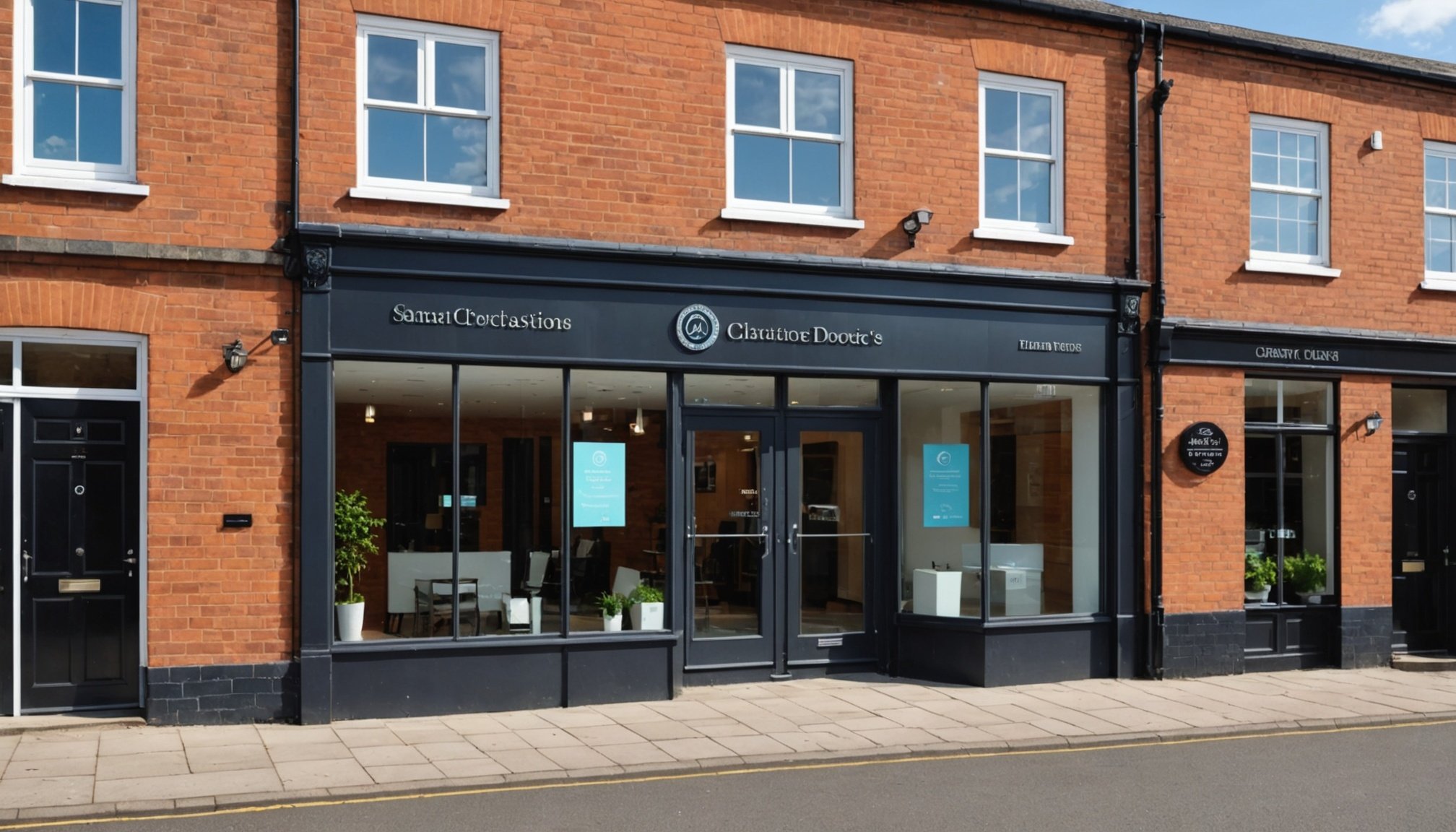Design Strategies for Maximizing Space
Design optimization in commercial interiors aims at creating a functional layout that efficiently utilizes every square inch. Utilizing open floor plans is a crucial strategy as it enhances flexibility and adaptability. Open spaces encourage a blend of different functions within a single area, thus eliminating the need for partitioned sections that consume more room.
Incorporating multi-functional furniture can significantly optimize space. Furniture pieces that serve multiple purposes, such as sofa beds or convertible tables, are valuable in small spaces. They provide the utility of various furniture while occupying less space, supporting diverse activities throughout the day while maintaining an uncluttered look.
Natural light and color schemes play a pivotal role in small spaces. By maximising natural light, commercial properties appear more extensive and welcoming. Light, neutral colors on walls and ceilings can also reflect light, making spaces feel larger and airier. Thoughtfully planned lighting combined with strategic color usage not only maximizes physical space but also elevates the perception of a more expansive area. This approach enhances the overall ambiance and utility of small commercial properties, fostering an environment conducive to productivity and customer satisfaction.
Introduction to Space Optimization in Commercial Properties
Maximizing space optimization in small commercial properties is crucial as it allows businesses to operate efficiently despite spatial constraints. In the UK, adapting to limited areas has become a trend, particularly important for urban locations where every square foot is valuable. The compact nature of such properties presents unique challenges. For instance, businesses often struggle to balance function and customer experience due to limited room capacities.
Also read : Crucial legal considerations for building on protected lands: key insights you must understand
Common issues include accommodating essential equipment without overcrowding, maintaining an inviting environment, and ensuring ease of movement for both staff and customers. Some practical benefits can arise from effective space utilization. Enhanced space optimization typically leads to improved operational efficiency, potentially increasing customer flow and satisfaction. Well-organized areas also make maintenance more manageable and cost-effective. Businesses may use creative solutions like wall-mounted displays or compact shelving units, maintaining the aesthetic while maximizing utility.
The focus on space in small commercial properties extends beyond utility to influence customer perceptions and employee productivity. By thoughtfully addressing these challenges, businesses can create environments that align with the modern demand for small commercial properties in urban UK areas. This approach supports sustainable growth and adaptation in competitive markets.
Storage Solutions for Small Commercial Spaces
When it comes to storage solutions in small commercial spaces, efficiency and clever organization are paramount. Transforming limited areas into functional spaces hinges on how storage is integrated.
Vertical Storage Options
Utilizing vertical space is a brilliant way to maximize storage. Wall-mounted shelves, hooks, and overhead racks take advantage of heights, keeping floors clear for movement. Vertical storage not only optimizes space but also enhances accessibility, offering easy reach to stored items.
Underutilized Spaces
Often overlooked spaces like under stairs, corners, or narrow gaps can be converted into invaluable storage spots. Hidden cabinets or pull-out drawers can be cleverly fitted in these areas. Creatively using such spaces adds a layer of surprise to design, often transforming awkward spaces into smart storage solutions.
Modular Storage Systems
Modular units provide flexibility and versatility, allowing businesses to customize their storage as requirements evolve. From adjustable shelving to stackable boxes, modular systems accommodate various items efficiently. They offer an adaptable, organized approach where every item has its place, thus supporting better space optimization.
Combining these strategies fosters a well-organized environment, crucial for small commercial ventures in the bustling UK market. Efficient storage contributes directly to operational efficacy, supporting seamless business activities while maintaining a functional layout.
Layout Optimization Techniques
Effective layout optimization in commercial spaces is integral for enhancing flow and space efficiency. Understanding how to best arrange a space can make a significant difference in both day-to-day operations and customer satisfaction.
Analyzing Customer Flow
Analyzing customer flow is crucial, particularly in retail settings. Smooth navigation paths not only improve the shopping experience but also increase potential sales. Consider wide aisles and intuitive paths that lead customers through different sections, ensuring all areas receive visibility.
Office Layout Strategies
In office environments, optimizing the layout can boost productivity. Strategically placing workstations and communal areas encourages collaboration while allowing focus spaces for uninterrupted work. Desk clustering can facilitate team integration, supporting efficient communication flows. Implementing “hot-desking” policies can further enhance space utilization by reducing underused desks in dynamic workspaces.
Zoning Spaces
Critical evaluation of zoning spaces allows for diverse functionalities within the same area. By clearly defining zones for specific purposes, like relaxation zones separate from work areas, businesses can tailor environments to specific needs without requiring additional space. This maximizes the utility of each square foot.
Integrating these techniques allows businesses to create adaptable environments, supporting operational goals and enhancing the overall experience for customers and employees alike. With thoughtful layout optimization, small commercial spaces can function on par with larger premises, ensuring efficient and effective use of every available space.
Innovative Technology for Space Management
Incorporating technology solutions into space management can revolutionize how small commercial properties operate. These innovative tools offer practical means of maximizing space efficiency.
Software for Space Planning
Modern space planning tools and software empower businesses to create efficient layouts by simulating different configurations virtually. They provide precise measurements and allow for easy adjustments, resulting in optimal furniture arrangements and improved floor utilization. Such tools also enable visualization of potential modifications without physical trial and error, saving time and resources.
Smart Furniture Solutions
Smart furniture, adaptable to dynamic environments, enhances space utilization through flexibility. Movable desks, foldable chairs, and other adjustable items offer multifunctionality, supporting businesses in maintaining a functional and inviting interior. These solutions cater to evolving needs, accommodating changes without requiring additional space or extensive renovations.
IoT in Commercial Spaces
The Internet of Things (IoT) introduces a new layer of smart space management, with devices that monitor and adjust energy use, lighting, and environmental settings automatically. Sensors provide data on space occupancy and usage patterns, enabling informed decisions for layout adjustments. IoT solutions foster a responsive and efficient environment, improving both employee comfort and operational cost-effectiveness.
Case Studies of Successful Space Maximization
Exploring case studies of successful space maximization offers valuable insights into the practical application of smart solutions in small commercial properties. These examples illustrate how challenges were overcome and highlight emerging strategies that can be replicated elsewhere.
An outstanding example includes a boutique retail store in London, which transformed its limited space by integrating modular storage and strategic shelving. This approach not only optimized store efficiency but also enhanced the overall customer experience, as noted by a 15% increase in customer satisfaction scores post-implementation.
Similarly, a co-working space in Manchester employed innovative technology solutions such as IoT devices to monitor and manage interior conditions, demonstrating the power of tech in creating adaptable and energy-efficient workspaces. Statistical insights from this case showcased a remarkable 25% improvement in space efficiency, contributing to higher client retention rates.
These success stories underline the significance of thoughtful design and technology integration in space maximization. By learning from these examples, other businesses can adopt similar best practices and adapt to spatial constraints effectively. Implementing such strategies not only fosters growth but also provides a competitive edge in the increasingly dynamic market landscape of commercial properties.
Local Resources and Support for Commercial Properties
Navigating the landscape of commercial properties in the UK demands an understanding of available resources and support services. Several UK-based organizations offer invaluable assistance in design and planning. The Royal Institute of British Architects provides guidance on sustainable and efficient design practices, ensuring businesses make the most of their spaces.
Understanding local planning regulations is crucial for successful project execution. Adherence to building regulations and codes is mandatory to avoid legal issues. Authorities such as the Planning Portal offer resources that clarify government regulations affecting space optimization—a vital aspect for businesses looking to redesign or enhance their commercial spaces.
Seeking professional networks can facilitate successful adaptations. Organizations like the British Council for Offices foster connections among industry professionals, offering opportunities for collaboration and idea exchange. These networking resources not only supply insights into best practices but also keep business owners informed of evolving trends and requirements.
Being well-supported with local resources significantly aids small commercial properties in adapting to spatial challenges. By leveraging these support services, businesses can efficiently navigate the complexities of commercial property management and achieve optimal space utilization in compliance with local norms and trends.
Trends in Small Commercial Property Design
Exploring modern design trends reveals a shift towards sustainable practices in small commercial properties. These properties often incorporate green materials to align with environmental standards. Utilizing renewable resources and eco-friendly finishes not only enhances the visual appeal but also supports sustainability.
The adaptation of co-working concepts in compact areas is gaining traction. This trend leverages collaborative spaces, fostering innovation while maximizing spatial efficiency. By blending private spaces with shared areas, businesses achieve a balance between teamwork and personal focus, crucial for diverse operations within limited footprints.
Predictions suggest a continued evolution in commercial property utilization. In the UK, urban centers lead this change, emphasizing flexible designs that cater to the growing demand for adaptable environments. Future developments may focus more on digital integration, further blurring the boundaries between physical and virtual workspaces.
These trending elements point toward a promising future for commercial properties, which will likely witness increased emphasis on adaptability and communal experiences. Understanding such trends allows business owners to make informed decisions, ensuring their spaces not only meet current demands but also remain relevant in the ever-evolving market landscape. As these trends unfold, they will define the next generation of commercial property design.







